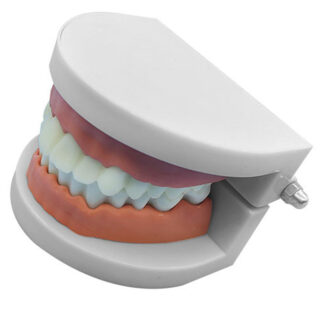Dental materials, also known as oral materials, are a type of biomedical materials that are widely used in the field of oral medicine to repair defective teeth, replace missing or missing dentition, and carry out oral preventive health care and deformity correction. These materials need to have good biocompatibility, sufficient mechanical strength, aesthetics, abrasion resistance and corrosion resistance. The following is a detailed classification and introduction of dental materials:
Classification of dental materials
Dental materials can be broadly divided into common consumables and specialty materials. Specialty materials can be subdivided into intraoral, extraoral, prosthetic, orthodontic, technician and oral health care consumables.
Shared consumables
- Disposable oral examination instrument box
- Disposable hats/masks/gloves
- Syringes and irrigation needles
- Suction head
- Rubber dam attachment
- Local anesthetics
- Cotton balls/gauze and other products
- Disinfectant products
- Overalls/shoes
- Protective goggles, protective equipment, face shields
- X-rays/rinsing fluid
Specialty materials
- Oral Ingredients
- Commonly used filling materials: such as composite resin, amalgam, etc.
- Adhesives, etching agents, pit and fissure sealants.
- Root canal filling materials: such as fiber piles, retaining nails, etc.
- Root canal disinfection materials, desensitization/caries prevention materials.
- Bleaching products, special plastic films, etc.
- Extraoral, implant material
- Commonly used surgical materials, implants, steel/titanium plates, retention nails, artificial bones, etc.
- Orthodontic consumables
- Orthodontic bonding materials, brackets, archwires, expanders, traction devices, etc.
- Implant nails/handles, tow rings, chain rubber bands, elastic wires, etc.
- Repair, mechanic consumables
- Impressions, temporary repair materials, gingival lines, trays, etc.
- Dentures/resin teeth, abrasives, emery burs, etc.
- Porcelain/ceramic materials, alloys/steels, relining and repair materials, etc.
- Preventive health care materials
- Fluoride gels, pit and fissure sealants, oral protectors, etc.
Common dental restoration materials
- Resin material
- Resin material is currently the most commonly used filling material, the color is close to natural teeth, and it can restore the beauty of teeth well.
- The price of ordinary resin fillings ranges from about 200 yuan to 500 yuan, while the price of high-end resins such as 3M P60 or Switzerland Yigojia resin fillings can reach more than 600 yuan.
- Glass ionic materials
- Vitreous ionomic materials contain fluoride, which can prevent secondary caries, and are suitable for the restoration of baby or sensitive teeth in children.
- The price is generally around 300 yuan to 400 yuan.
- Amalgam material
- Amalgam is a long-established filling material with extremely high wear resistance and compressive strength, but the color is not aesthetically pleasing, and it is generally used in the posterior tooth area.
- The price is relatively low, around 100 yuan to 200 yuan.
- Porcelain material
- Porcelain materials are suitable for patients with high aesthetic requirements, such as porcelain crowns or porcelain veneers.
- The price is higher, and the cost of restoring a single tooth can range from thousands of yuan to tens of thousands of yuan.
Steps to use filling materials
The order of use of filling materials is mainly divided into three steps: cleaning, adhesive application and filling. The specific operation is as follows: first, the oral cavity is cleaned to remove plaque and stones; The adhesive is then applied to the surface of the tooth; Finally, the filling material is insulated, blow-dried and filled into the cavity. If the cavity is large and the pulp has been exposed, nerve soothing treatment may be required before permanent filling.
Precautions
When choosing a filling material, it is recommended to visit a professional dental department, and the doctor will choose the appropriate material according to the specific situation and needs of the patient. In addition, it is important to pay attention to oral hygiene and eating habits after filling to avoid secondary caries and other oral problems.

